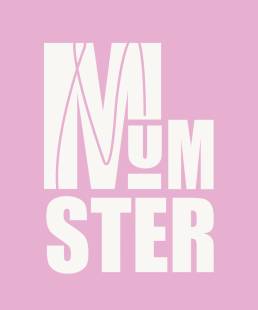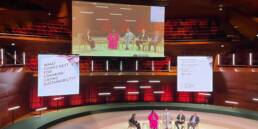ACT TO MAKE AN IMPACT #4: Is circular fashion the ultimate answer to the current failing fashion system?
The fashion industry has been long known for being the second most polluting industry in the world[1]. With such bleak statistics, many are trying to figure out how to make the fashion world sustainable at the speed of light. One of the most innovative options is the concept of circular fashion.
With mountains of old clothes piling up in warehouses, the circular economy seems to be the answer to all of the fashion problems. Yet, with currently less than 1% of clothing recycled into new garments[2], the mainstream implementation of this breakthrough system is nowhere in sight.
With the panel of top experts on circularity, Chanel Trapman is trying to understand all the ins and outs of circular fashion on the fourth episode of the ‘Act to Make an Impact’ podcast [Check out playlist]. Recorded at the Fashion for Good museum in the heart of Amsterdam earlier this year, Chanel, with the help of the eager audience, asks burning questions to Gwen Cunningham (Circle Economy & AMFI), José Koopman (Koopman-Works), and Anniemieke Koster (Enschede Textielstad) about the challenges, solutions, and opportunities of circular fashion.
Challenges & Solutions of Circular Fashion
When it comes to circular fashion, there are distinct challenges regarding this novel concept in every area of the fashion industry. As explained by Annemieke Koster, the owner of the very first sustainable weaving mill in Europe, one of the first hoops to jump over is fabric sourcing: “Even if designers find a sustainable fabric option, they are usually forced to buy 500-1000 meters at once, and a lot of them can’t afford that. So that’s why I started an on-demand model, and designers are now able to order a custom-made piece of fabric starting from one meter.”
Consequently, not only that the on-demand business model is more affordable, but it also eliminates unnecessary waste that comes from inflexible bulk orders, taking one step forward in making the fashion industry more sustainable and circular.
According to another expert José Koopman, a sustainability consultant for sourcing and manufacturing, the lack of knowledge among fashion buyers and the reluctance of top management are additional hurdles standing the way of the implementation of fundamental solutions like circular fashion.
From her 25 years of experience, even if some companies do want to become circular, the right technologies are not available yet on a large scale. Luckily, there is some latest positive development in this area of the circular economy, too.
Gwen Cunningham herself was personally involved in constructing such an innovation as the textile program lead at Circle Economy. After 6 years of close cooperation of leading scientists, engineers, and other stakeholders, the Fibersort machine officially launched in March this year. This cutting-edge technology can quickly detect what materials are garments made of and sort them accordingly, thus significantly scaling up the recycling efforts of old clothing into new items.
The Role of Consumers
During the heated panel discussion, it became crystal clear that the missing piece of the puzzle called the circular fashion system lies within the daily decisions of the consumers. According to the Pulse of the Fashion Industry report[3], global fashion brands listed consumers as the number one factor in primarily driving sustainability in the industry.
As Gwen further points out, fashion companies are looking to us as consumers to guide their implementation of potential circular strategies, from choosing recycled fabrics to expanding on new disruptive business models. José summarizes the phenomenon this way: “It’s all about the choices every consumer makes every day. If there is a demand, supply will follow.”
During this podcast episode, the audience itself chipped in by expressing their points of view on circularity and sharing their unique experience with fashion. Sioe, an artist and a freelance creative, passionately explained the psychological root cause of the fast-fashion appeal: “I feel that fast fashion is a thing for a lot of people to hide in to feel better about themselves, so why don’t we start there?”
Podcast episode on Circular FashionDuring an hour-long podcast, these highlights are just a summary of the fascinating conversation between Chanel, experts, and the audience on the hot topic of circular fashion. For a proper deep dive on circularity in the fashion industry, watch now the full episode of the 'Act to make an impact' podcast on YouTube or listen in on Spotify.
Join ACT TO MAKE AN IMPACT
We are constantly looking for inspiring people in the fashion industry who are willing to share their knowledge with an audience, to bring the fashion industry to a more sustainable future. Whether you are a designer, teacher or researcher, please share your ideas for an act to make an impact episode. We would be happy to collaborate and organize a video podcast at your event, school or any other location.
Related Posts
December 18, 2023
The True Impact of Vegan Handbags: How Lisa Marin’s life cycle analysis proves their products are better for the planet than (faux) leather alternatives.
Handbags are one of the most prominent…
September 1, 2023
A Tool for Change: Unveiling the Visionaries of Sustainable Fashion
In a world dominated by fast fashion…
August 16, 2023
Driving Change in the Fashion Industry: Lessons from the Copenhagen Global Fashion Summit 2023
The fashion industry has long been…



